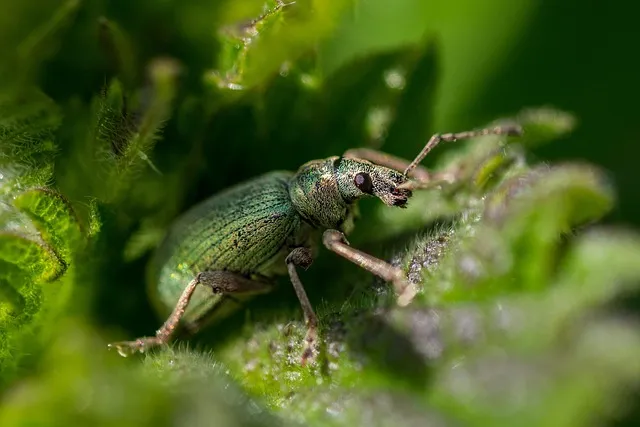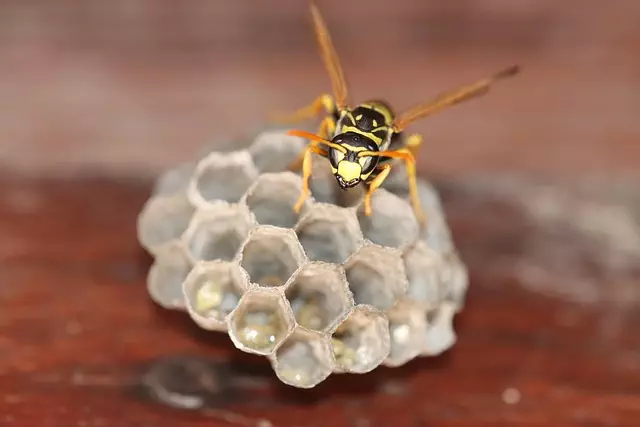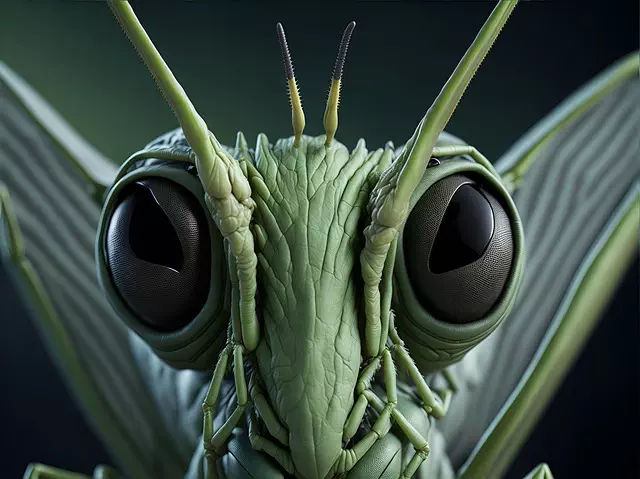Rodent infestations are common household issues requiring professional pest exterminators for effective control. Entry points vary, and different species demand tailored strategies. Exterminators use strategic treatments, traps, and eco-friendly methods to eliminate rats, mice, and other rodents while minimizing risks. Early signs like holes, droppings, and chewed wires indicate infestation, prompting regular inspections. Non-toxic alternatives, including natural repellents and specialized devices, offer humane and environmentally safe solutions. Traditional pest control involves targeted insecticides applied by professionals who inspect entry points and high activity areas. Preventing future infestations through cleaning, sealing gaps, and storing items in airtight containers is crucial. Engaging reputable pest exterminators ensures a safe, hygienic living environment free from rodents.
Rodent infestations can wreak havoc on homes and businesses, causing structural damage and posing health risks. Understanding these common pests and their behaviors is the first step to effective control. This comprehensive guide delves into various aspects of rodent extermination, from identifying signs of activity to exploring non-toxic methods and traditional pest control chemicals. Expert insights on prevention, specific rodent issues, legal considerations, and cost estimates empower property owners and managers to tackle these intruders with confidence, relying on professional assistance when needed.
Understanding Rodent Infestations: Common Types and Behaviors

Rodent infestations are a common household problem, often requiring the expertise of a professional pest exterminator. Understanding these infestations is the first step in effective control and prevention. Rodents, primarily rats and mice, are adaptable and prolific breeders, making them challenging to eliminate once established. They can enter homes through various means, from open windows and doors to small cracks and holes, seeking food, water, and shelter.
Different rodent species exhibit distinct behaviors, with common types including house mice, Norway rats, and roof rats. House mice are known for their curiosity and ability to navigate narrow spaces, often entering buildings through unscreened vents or open doors. Norway rats, larger and more aggressive, prefer areas with moisture and may live in walls or attics. Roof rats, as the name suggests, inhabit elevated locations like roofs and attics, but can also nest in walls and ceilings. Recognizing these behaviors is crucial for effective extermination strategies employed by pest exterminators to mitigate rodent damage and ensure a safe living environment.
The Role of a Pest Exterminator in Effective Rodent Control

When dealing with a rodent infestation, turning to a pest exterminator is crucial for effective control and eradication. These professionals are equipped with the knowledge, skills, and tools necessary to identify and eliminate rodents such as rats and mice from residential or commercial properties. A pest exterminator employs various strategies, including targeted treatments, traps, and repellents, to ensure that the infestation is swiftly and humanely resolved.
Their expertise lies in understanding the habits and behaviors of rodents, allowing them to navigate through complex environments and reach hidden spaces where pests may lurk. By following strict safety protocols, they use environmentally friendly methods, minimizing potential risks to residents, pets, and the local ecosystem. A pest exterminator’s swift action can prevent further damage caused by rodents, ensuring a healthier and safer living or working environment.
Identifying Signs of Rodent Activity in Your Home or Business

Many homeowners and business owners are unaware of rodent intrusion until it becomes a significant problem. Recognizing early signs of rodent activity is crucial in effective pest extermination. Rats and mice often leave distinct traces as they navigate through structures, indicating their presence. Common indicators include small holes or gaps in walls, floors, or ceilings—entry points for these pests. Discerning eyes may notice chewed wires or materials, which are common behaviors among rodents seeking food or new pathways.
Additionally, the presence of rodent droppings near food sources or unusual noises from walls and attics can signal an infestation. Pest exterminators recommend regular inspections to identify these signs early on. Prompt action by professional exterminators can prevent extensive damage caused by rodents and ensure a safe living or working environment.
Non-Toxic Methods for Rodent Extermination: A Safer Alternative

Many traditional methods of rodent control involve toxic chemicals, which can be concerning for homeowners and businesses prioritizing safety and environmental conservation. Fortunately, there are now non-toxic methods available that offer effective pest extermination while minimizing potential hazards. These alternatives have gained popularity due to their humaneness and eco-friendly nature.
One such approach is using natural repellents and exclusion techniques. Common household items like peppermint oil, cinnamon, and cloves can act as powerful rodent deterrents when strategically placed around entry points. Physical barriers, such as steel wool, metal mesh, and sealed cracks, prevent rodents from gaining access to buildings. Additionally, professional pest exterminators may employ specialized devices that emit ultrasonic sounds or heat, driving out pests without causing harm. These non-toxic methods not only protect against rodents but also promote a healthier indoor environment for residents and pets.
Traditional Pest Control Chemicals: What to Expect During Treatment

When it comes to traditional pest control chemicals, understanding what to expect during treatment is crucial for anyone dealing with rodent infestations. A pest exterminator will typically use a combination of chemicals designed to deter, trap, and eliminate rodents like mice or rats. These treatments often involve the application of insecticides in liquid form, which are specifically targeted at the nervous systems of rodents, rendering them ineffective.
During the treatment process, professionals will carefully inspect your property to identify entry points and areas of high activity. They’ll then apply these chemicals strategically, focusing on walls, floors, and other places where pests tend to hide. It’s important to remember that while these chemicals are effective, they must be used responsibly and according to safety guidelines to avoid any potential risks to human health or the environment.
Preventing Future Infestations: Tips from a Professional Exterminator

Preventing future infestations is every homeowner’s and business owner’s priority, especially after dealing with rodents. A professional pest exterminator offers valuable insights to help mitigate the risk of reinfestation. The first line of defense involves maintaining a clean environment, eliminating potential food sources, and securing all entry points. Regularly cleaning and sanitizing spaces where food is prepared or stored is crucial, as are sealing gaps around pipes, vents, and doors. Additionally, storing items in airtight containers can significantly reduce the appeal of these areas to rodents.
Professionals also recommend staying vigilant about any signs of rodent activity, such as droppings, gnaw marks, or strange noises. Early detection is key; addressing issues promptly prevents infestations from escalating. Regular inspections and maintaining a robust pest management plan are essential strategies recommended by pest exterminators. This includes year-round treatments to disrupt the rodent life cycle, ensuring a more permanent solution.
Dealing with Specific Rodent Issues: Rats, Mice, and More

Legal Considerations and Regulations in Rodent Extermination

When it comes to rodent extermination, legal considerations and regulations play a crucial role in ensuring the safety and effectiveness of the process. In many regions, pest exterminators must adhere to strict guidelines set forth by local health departments and environmental agencies. These regulations cover various aspects, from the types of chemicals that can be used to the methods of application, with the primary goal of minimizing potential risks to humans, pets, and the environment.
Exterminators are required to obtain permits for certain chemicals and follow specific protocols for their use, ensuring that treatments are conducted responsibly. Additionally, there are rules regarding the disposal of treated materials and areas that must be off-limits to the public during and after treatment. Compliance with these regulations is not only a legal obligation but also a mark of professionalism for pest control services, fostering trust among clients who seek reliable and safe solutions from reputable pest exterminators.
Cost Estimates and Packages Offered by Pest Exterminators

When considering rodent extermination, one of the first steps is understanding the cost estimates and packages offered by pest exterminators. Services can vary widely in price depending on several factors, including the extent of the infestation, the size of your property, and the specific treatments required. Basic services typically focus on one-time visits and may involve trapping or poisoning rodents. These packages usually start from $100 to $300.
More comprehensive plans, designed for ongoing protection against rodent infestations, often include regular inspections, multiple treatment sessions, and preventative measures. These premium packages can range from $300 to $1000 or more annually. Some pest exterminators also offer custom quotes based on individual needs, ensuring you get a tailored solution that aligns with your budget. Remember, choosing the right package not only depends on cost but also on the expertise and reputation of the exterminator to deliver effective and safe rodent control.



